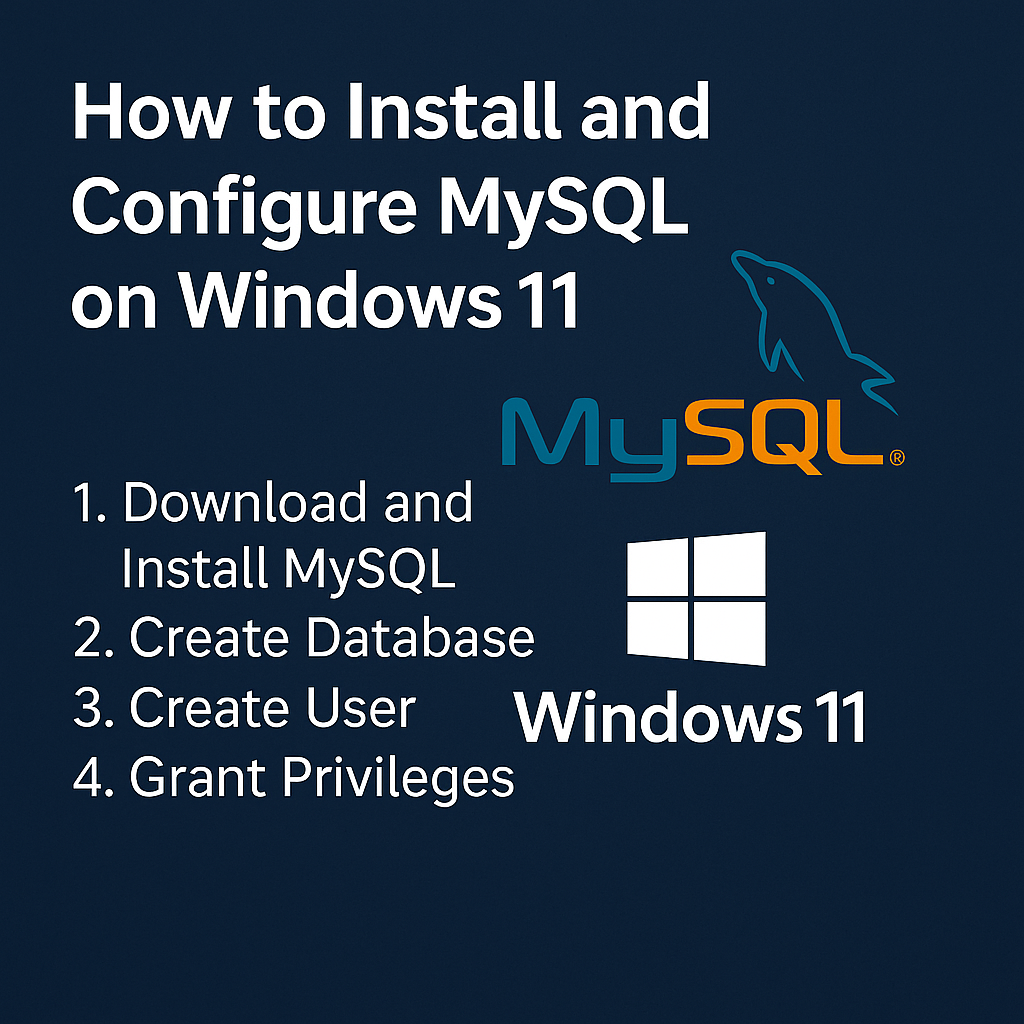MySQL is one of the most popular relational database management systems, and installing it on Windows 11 is straightforward. In this guide, we’ll walk through installing MySQL, configuring it, creating a database and user, and granting privileges.
1. Download and Install MySQL
- Download MySQL Installer
- Go to the official MySQL Downloads page.
- Choose MySQL Installer for Windows (preferably the Community Edition).
- Run the Installer
- Double-click the downloaded
.msifile. - Select “Developer Default” (includes MySQL Server, Workbench, and tools).
- Click Next and follow the prompts.
- Double-click the downloaded
- Configure MySQL Server
- Choose the Standalone MySQL Server option.
- Select the Default Authentication Method (Strong Password Encryption recommended).
- Set the root password (make sure to remember it).
- Click Next and complete the installation.
2. Verify MySQL Installation
- Open Command Prompt and type:
mysql --versionYou should see the installed MySQL version.
- To log in:
mysql -u root -p
Enter the root password you set during installation.
3. Create a Database
Once logged in to the MySQL shell:
CREATE DATABASE myapp_db;
Check if it’s created:
SHOW DATABASES;
4. Create a New User
Create a user with a secure password:
CREATE USER 'myuser'@'localhost' IDENTIFIED BY 'mypassword123';
5. Grant Privileges to the User
Give the new user full access to the myapp_db database:
GRANT ALL PRIVILEGES ON myapp_db.* TO 'myuser'@'localhost';
FLUSH PRIVILEGES;
6. Test the New User
Exit the MySQL shell:
EXIT;
Log in with the new user:
mysql -u myuser -p
Then select the database:
USE myapp_db;
If no errors appear, everything is set up correctly.
Conclusion
You’ve successfully installed MySQL on Windows 11, configured it, created a database, added a user, and granted privileges. You can now start building applications using this database!


